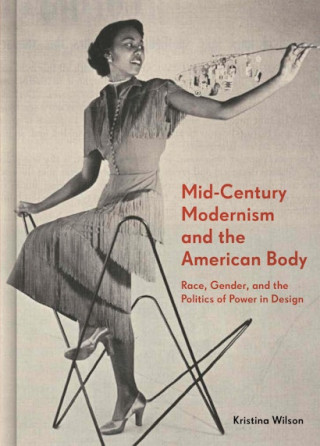People encounter “mid-century modern” everywhere in today’s media landscape — from home makeover shows on HGTV to furniture stores such as Room and Board and magazines such as Dwell. Modern interiors from the 1940s, 1950s, and 1960s were characterized by open-concept plans, with a clutter-free floor that allowed the viewer sexy glimpses of metal furniture legs or sculpted wood frames holding up a sofa or table. If this sounds like every modernist interior you’ve seen recently, this experience only attests to the pervasiveness of the mid-century design ethos. Many pieces of modern design furniture sold today are indebted to popular designs of the postwar decades: chairs, tables, and storage devices by highly collectible names like Charles and Ray Eames, George Nelson, Paul McCobb, T.H. Robsjohn-Gibbings, and Hans Wegner. Clearly these designs have appeal now — but what do we actually know about their history? Who was buying this furniture when modernism was new, and why?
The first thing a savvy reader of this article will note is that, of the names I listed in the previous paragraph, all but one are male, and all are white. Such demographics reflect a massive power discrepancy in the mid-century design world. It was a career marketplace where white men predominated; women and designers of color were less numerous, and their work as an associate in a design office meant their creativity often went uncredited. (Today’s design world is marginally better, although still plagued by similar issues.) But the history is more complex than just the question of who designed this furniture. The meaning of these designs for mid-century consumers can be found in how the designs were advertised, how they were used to advertise other products, and how — in short — they appeared in the media landscape of the postwar decades. When we look at “mid-century modernism” through the lenses of mid-century media, it begins to look different from the design attitude we think we know.
Take, for example, the highly successful designs of Eero Saarinen, whose chairs and tables were manufactured by Knoll Associates beginning in 1946. His Model 72 side chair (1948) makes countless media appearances in the postwar years, including in an advertisement for girdles that appeared in Life throughout 1950. The model in the ad drapes her girdled figure across Saarinen’s chair, and we are meant to equate the beauty of her sculpted curves with the beauty of the chair’s curves. Indeed, the girdle (and the chair, perhaps?) does more than make her beautiful: As the copy explains, it “curb[s] your curves with tender firmness.” Here is a chair to keep you in your place within the social and patriarchal order.
